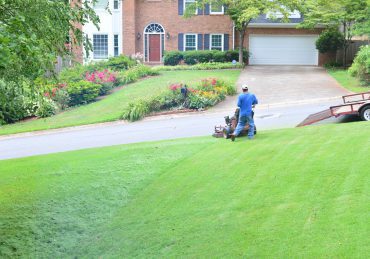How and When to Kill Lawn Grubs
Lawn grubs, the larvae of beetles such as June bugs, Japanese beetles, and chafer beetles, are a common pest that can cause significant damage to lawns. These small insects live beneath the soil and feed on grass roots, which can lead to brown, patchy areas and weakened turf. If left unmanaged, a grub infestation can destroy a lawn, inviting other pests like moles and birds that feed on the grubs, further worsening the damage. It’s crucial to address grub issues promptly, as early intervention can save a lawn from long-term harm and costly repairs.
In this article, you’ll learn how to identify signs of a grub problem, when to treat your lawn for grubs, and the most effective methods for controlling them. Additionally, we will discuss the best times for intervention to prevent severe damage. By understanding how to manage lawn grubs, homeowners can maintain healthier, more resilient lawns and avoid the extensive damage these pests can cause.
What are Lawn Grubs?
Lawn grubs are the larvae of various beetles, such as Japanese beetles, June bugs, and European chafer beetles. These pests are typically white or grayish, C-shapes, with soft bodies and brown heads. They live beneath the soils surface and feed on grass roots, causing significant damage to lawns by weakening the turk and creating brown, dead patches.
The grub lifecycle begins when adult beetles lay eggs in the soil during late summer. These eggs hatch into larvae, which begin feeding on the grass roots. Grubs remain in this feeding stage through fall, before burrowing deeper into the soil to overwinter. In the spring, they resume feeding briefly before pupating and emerging as adult beetles in summer, restarting the cycle. Among the common grub types, Japanese beetle larvae are particularly destructive, and their feeding can leave lawn vulnerable to additional damage from animals that dig for grubs.

Signs of a Lawn Grub Problem
The visible symptoms of a lawn grub infestation often start with irregular brown patches that appear in late summer or early fall. These patches occur because grubs feed on the grass roots, cutting off the plant’s ability to absorb water and nutrients. As a result, the grass wilts and dies, leaving dry, spongy areas that can be easily pulled up like a loose carpet. Another sign of a grub problem is increased activity from animals such as raccoons, skunks, and birds digging up the lawn in search of grubs as food. This digging can further damage the turf, creating holes and torn-up sections.
While these symptoms are common with grubs, it’s essential to distinguish them from other lawn issues like drought, fungal diseases, or nutrient deficiencies. Grub damage is often concentrated in small, defined areas, whereas drought stress or disease usually impacts the yard more uniformly. Also, lifting a section of affect turf to check for white, C-shaped larvae in the soil is a quick way to confirm a grub infestation. If more than five to ten grubs are found per square foot, it indicates a severe infestation requiring treatment.

How to Scout for Lawn Grubs
To check for lawn grubs, begin by selecting areas where the grass appears to be damaged or brown. Using a spade or shovel, cut a small section of sod, about one square foot, and gently peel it back like a carpet. Examine the soil just below the root zone, where grubs typically feed. Looks for small, white, C-shaped larvae with brown heads, which are usually found in groups. Count the number of grubs in this section. If you find more than five to ten grubs per square foot, this suggests a severe infestation that could harm your lawn. After examining the soil, be sure to replace the sod and water the area to minimize disturbance. Conducting this simple check in late summer or early fall, when grubs are most active, will help you catch the problem early and take appropriate action to protect your lawn.
When to Treat Your Lawn for Grubs
The ideal time for grub control treatments is typically in late spring and early summer, when grubs are actively feeding near the surface and are still small and vulnerable. During this stage, they are easier to manage with both chemical and natural treatments. Applying insecticides or beneficial nematodes at this time allows for maximum effectiveness, as the grubs are actively consuming grass roots and are exposed to the treatments. Early intervention can prevent significant damage before the grubs mature and cause more widespread harm.
However, timing may vary depending on the type of grub and the region. For example, Japanese beetle grubs tend to be the most active in late summer, so treatments may need to be applied earlier or later depending on your location. In some areas, where the ground freezes earlier, late-summer treatments might be more effective. It’s also important to consider the lifecycle of specific grub species. Monitoring the adult beetles activity can provide clues about when to expect egg-laying, and subsequent grub development.
Preventative Measures for Lawn Grubs
Homeowners can prevent grubs from becoming a problem by focusing on lawn care practices that promote healthy grass and soil. A healthy, well-maintained lawn is more resilient to pests, including grubs. Start by maintaining healthy soil through regular aeration and ensuring proper drainage. Healthy soil encourages deep root growth, making the lawn less susceptible to grub damage. Additionally, applying organic fertilizers helps strengthen grass roots, making the turf less vulnerable to grubs.
Proper mowing techniques are also important in preventing grub infestations. Set your mower blades high, around 3 to 4 inches, as taller grass promotes deeper root systems and creates a less inviting environment for adult beetles to lay eggs. For those unsure of proper lawn care, additional information can be found on University of Illinois’s Lawn Care guide. This will help guide homeowners to lawn care, including pest control, soil management, and fertilization. Also avoid over-watering your lawn, as overly moist soil can attract beetles seeking a place to lay eggs.
Another preventative measure is to apply grub preventative insecticide in early summer, before the lawn grubs hatch. Preventative products contain ingredients like imidacloprid, which are effective in killing grubs before they start feeding. For those seeking natural solutions, beneficial nematodes can be introduced into the soil to target lawn grub larvae.
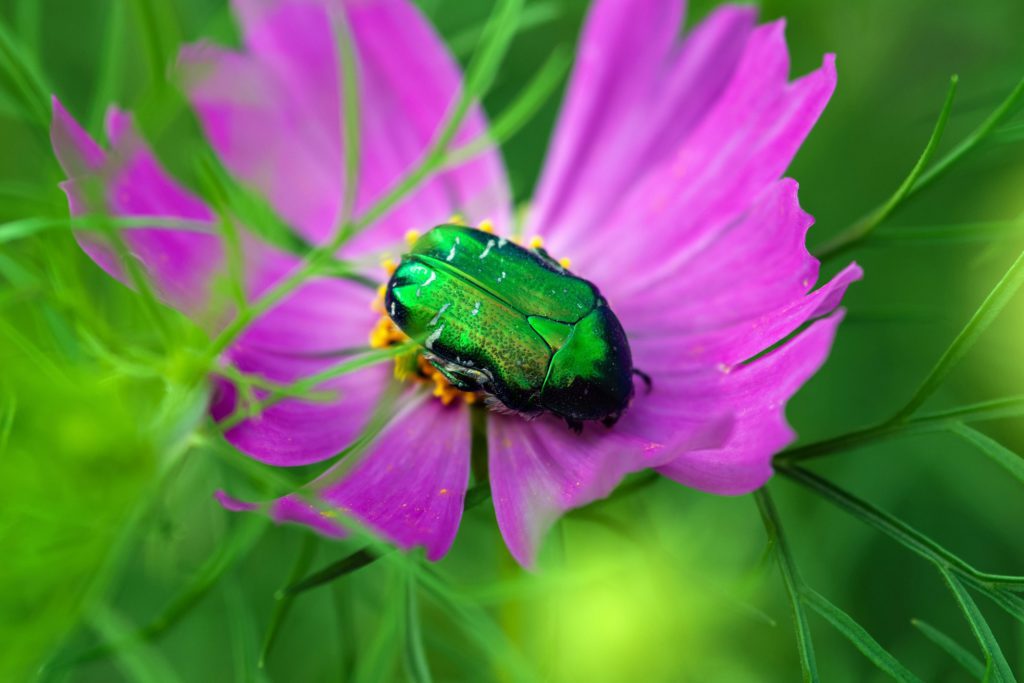
Choosing the Right Preventative Insecticides
Preventative insecticides for grubs generally fall into two categories: chemical and biological. Common chemical insecticides include products containing imidacloprid or chlorantraniliprole, which are highly effective when applied in early summer, before grubs hatch and begin feeding. These insecticides target young grubs, preventing them from causing significant damage. Biological alternatives include beneficial nematodes, microscopic organism that naturally infect and kill grubs without harming beneficial insects or the environment.
For safe use, it’s essential to follow the products label instructions carefully, including proper dilution, application rates, and timing. Additional information can also be found on the EPA’s site for Pest Control and Pesticide Safety for Consumers. Avoid applying insecticides during heavy rain, as runoff can spread chemicals into waterways. Additionally, keep children and pets off treated areas until the product has fully dried. Homeowners should also be mindful of pollinators, opting for grub control methods that minimize impact on bees and other beneficial insects, particularly during flowering periods. Thoughtful use ensures both effective treatment and environmental safety.
Curative Treatments for Lawn Grubs
When a lawn is already infested with grubs, curative measures are essential to stop further damage. Curative insecticides are the most effective way to quickly reduce the populations of grubs in lawn. Products containing carbaryl or trichlorfon are commonly used for this purpose, as they target actively feeding grubs. These insecticides work best when applied in late summer or early fall, when grubs are large and close to the surface. To ensure proper coverage, water the lawn thoroughly after applying these treatments to help the insecticide penetrate the soil and reach the grubs.
For homeowners seeking natural alternatives, beneficial nematodes are a viable option. These microscopic organisms can be introduced into the soil, where they infect and kill grubs without harming other beneficial insects. Nematodes are most effective when applied in moist soil during cooler parts of the day to avoid heat stress. Milky spore power is another natural remedy, specifically targeting Japanese beetle grubs. Once applied, it establishes in the soil and provides long-term control, though it may take several seasons to fully take effect.
Natural Treatments for Lawn Grubs
Eco-friendly approaches to controlling lawn grubs focuses on natural remedies like beneficial nematodes and milky spore. Beneficial nematodes are microscopic, soil-dwelling organisms that naturally target and kill grubs. They are applied to moist soil and work by infecting the grubs with bacteria and lead to their death. Nematodes are effective against a variety of grub species and are safe for beneficial insects, pets, and humans. They provide an environmentally friendly option for controlling lawn grubs, particularly in early fall when grubs are most active.
Milky spore is another eco-friendly solution, specifically targeting Japanese beetle grubs. This naturally occurring bacterium infects grubs when ingested and spreads through the soil over time. While highly effective in areas with large population of Japanese beetles, milky spore can take a few years to fully establish and provide long-term control.
The Life Cycle of Lawn Grubs
A grub’s life cycle consists of four main stages: egg, larva (grub), pupa, and adult beetle. The cycle begins when adult beetles, such as Japanese beetles or June bugs, lay eggs in the soil during midsummer. These eggs hatch within two weeks, turning into larvae or grubs, which immediately begin feeding on grass roots. This larval stage is the most destructive, as grubs feed aggressively from late summer through early fall, causing significant damage to lawns. As temperatures drop, grubs burrow deeper into the soil to overwinter. In spring, they resurface briefly to feed again before entering the pupal stages, where they transform into adult beetles, emerging in summer to repeat the cycle.
Understanding this life cycle is crucial for effective lawn grub control. Additionally, a comprehensive guide on lawn grubs and signs of grubs on lawn can be found on Cornell University’s College of Agriculture and Life Sciences. Preventative treatments, such as insecticides containing imidacloprid, are best applied in early summer, targeting the eggs and newly hatches grubs before they cause damage. Curative treatments, like carbaryl or trichlorfon, are most effective in late summer or early fall, when grubs are actively feeding. Monitoring the lifecycle helps homeowners time interventions precisely, ensuring treatments target the most vulnerable stages of the grub’s development, maximizing effectiveness and minimizing lawn damage.
When to Call Pest Control Professionals
Hiring a professional may be the best option for severe grub infestations or for homeowners unsure about treatment methods. If large areas of your lawn are turning brown, wilting, or being torn up by animals, and home treatments aren’t effective, a professional can provide an expert diagnosis and advanced solutions. Lawn care professional also have access to strong, specialized insecticides and can apply them with precision to ensure thorough coverage. Additionally, professionals can offer advice on restoring heavily damaged lawns and preventing future infestations. If you’re unsure about the extent of the infestation or the correct products to use, hiring an expert can save you time, reduce the risk of improper application, and prevent costly damage.

FAQs about Lawn Grubs
When dealing with grub infestation, homeowners often ask if all brown spots in the lawn indicate grubs. Not all brown spots are caused by grubs, other factors like drought, fungal diseases, or poor soil quality can also lead to brown patches. However, if the affected areas feel spongy, lift easily, or if animals like skunks and birds are digging in those spots, it’s a strong indication of grub activity. Confirming the presence of lawn grubs requires digging a small section of sod and examining the root zone for white, C-shaped larvae.
Another common question is whether grubs serve any positive role in the ecosystem. While a few grubs can aerate the soil slightly as they move, large populations can cause significant damage to lawns, making their presence undesirable in most residential areas. In natural settings, grubs do serve as a food source for animals like birds and small mammals.
Homeowners also wonder how to predict lawn grub damage. Monitoring beetle activity in the summer can help. If adult beetles are present in large numbers, it indicated a higher likelihood of grub infestations in late summer and fall. Regular lawn inspections during peak beetle season can help catch infestations early, preventing extensive damage.

Lawn Mowing Cost Calculator
Not sure what you’ll pay to get your grass cut? Use the calculator below to get an instant estimate based on your yard size and mowing needs. Try the Calculator

How Early Is Too Early to Mow the Lawn?
You’re standing at the window with coffee in hand. The sun’s barely up, and you’ve got a packed Saturday ahead. The mower’s ready. The lawn’s shaggy. The only thing stopping

How Much Does Landscaping Cost in 2025?
Walk through any neighborhood in spring and you’ll spot it: one yard looks like it belongs on a magazine cover, while the next has patchy grass and a tilted mailbox.
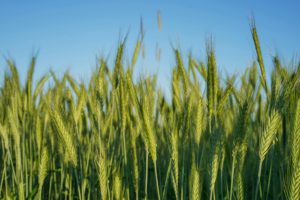
Winter Grass Care Guide
When your lawn stops growing, it’s not dead, it’s waiting You mow less, see fewer weeds, and maybe breathe a little easier in December. But if you’ve ever looked out
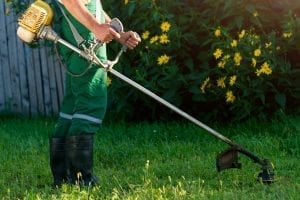
What is Weed Whacking and Why It Matters
Weed whacking means simply cutting down grass and weeds in spots a mower can’t reach using a handheld tool. A weed whacker is a crucial piece of equipment to have
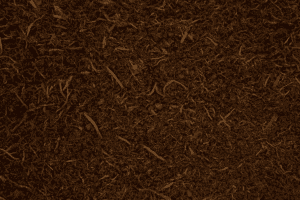
What is Peat Moss?
You’ve probably seen it stacked in bags at the garden center, usually next to seed-starter kits or potting soil blends. But if you’ve ever paused and wondered, “What is peat


